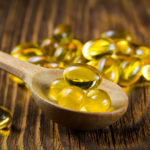Vitamin D For Better Fitness?
Is it true that the higher your vitamin D levels are, the better your physical fitness? How can you tell if you’re getting enough vitamin D?
Andrew Weil, M.D. | February 1, 2019

New evidence suggests that higher levels of vitamin D are linked to better exercise capacity and better cardiorespiratory fitness. This finding comes from a Virginia Commonwealth University investigation that looked at how vitamin D levels corresponded to cardiorespiratory fitness among 1,995 adults aged 20 to 49. Forty-five percent of the participants were women, 49 percent white, 13 percent were diagnosed with high blood pressure and four percent with diabetes.
All were participating in the U.S. National Health and Nutrition Examination Survey (NHANES), which maintains data on vitamin D status as well as cardiorespiratory fitness based on the results of treadmill tests.
Analysis of this information showed that participants whose vitamin D levels were highest were more than four times more fit than those whose levels were lowest. (The investigators excluded participants whose vitamin D levels were markedly high or low.) Even after adjusting for such factors as age, sex, race, body mass index, smoking, high blood pressure, and diabetes, the association between high vitamin D levels and higher cardiovascular fitness remained significant: those with the highest vitamin D levels were nearly three times more fit than those with the lowest.
Cardiorespiratory fitness – the ability of the heart and lungs to supply oxygen to the muscles during exercise – is a reliable indicator physical fitness in general; people with higher cardiorespiratory fitness are healthier and live longer. The researchers found that the relationship between higher vitamin D levels and better exercise capacity held true in both men and women, regardless of age, ethnicity, body mass index, smoking status, and whether or not high blood pressure or diabetes were present.
Study leader Amr Marawan, an assistant professor of internal medicine, explained that each increase in vitamin D seen was linked to a statistically significant rise in VO2 max (the maximum amount of oxygen the body can use during exercise). This suggests that the higher your vitamin D level, the better your exercise capacity. Because this was an observational study, it didn’t prove the higher vitamin D levels caused the better physical fitness, although Dr. Marawan made the point that the association seen was “strong, incremental and consistent across groups.”
The researchers didn’t look into the study participants’ vitamin D consumption or their exercise habits. But they suggested that people who are most physically fit may be more likely to be taking supplemental vitamin D or getting more sun exposure.
Similar findings emerged from a study from the Harvard T.H. Chan School of Public Health published in 2011. It found that three or more hours of vigorous exercise per week led to higher levels of both vitamin D and HDL (“good”) cholesterol, as well as a 22 percent reduction in the risk of heart attack.
If you want to know your vitamin D level, a blood test can determine it, but because the tests aren’t standardized it’s possible to get different results from different labs. (I don’t recommend home tests, which are likely to be inaccurate). The normal range is from 30.0 to 74.0 nanograms of 25-hydroxy vitamin D per milliliter (ng/mL) of blood. Normal value ranges may vary slightly among different labs.
As you may know, I recommend that everyone take 2000 IU of vitamin D daily, not only because it assists in the absorption of calcium and promotes bone mineralization but for its many other beneficial health effects.
Andrew Weil, M.D.
Source:
Amr Marawan et al, “Association between serum vitamin D levels and cardiorespiratory fitness in the adult population of the USA.” European Journal of Preventive Cardiology, 2018, DOI: 10.1177/2047487318807279











